This article was medically reviewed by Janice Litza, MD. Dr. Litza is a board certified Family Medicine Physician in Wisconsin. She is a practicing Physician and taught as a Clinical Professor for 13 years, after receiving her MD from the University of Wisconsin-Madison School of Medicine and Public Health in 1998.
There are 13 references cited in this article, which can be found at the bottom of the page.
wikiHow marks an article as reader-approved once it receives enough positive feedback. In this case, several readers have written to tell us that this article was helpful to them, earning it our reader-approved status.
This article has been viewed 182,971 times.
Research shows that applying pressure to severe bleeding immediately helps minimize blood loss. Ideally, press a cloth or bandage against the wound, but you can also press on the wound with your hand if it's your only option.[1] Experts say that you should call for help and check the wound for protruding objects before you apply pressure, however.[2] Giving first aid to someone with severe bleeding can be a scary experience, but you can help them get the care they need to help them recover.
Steps
Treating Immediate Issues
-
1Get help. Call for emergency medical help or ask someone else nearby to do it while you begin caring for the injured person. Do this as soon as possible, so that help will quickly arrive. This is the key to survival for a severely injured person.[3]
- If you suspect the person has injuries that are causing internal bleeding, let medical help know when you call. There might be internal bleeding if you notice the person coughing up blood, vomiting, or bleeding from the ears, eyes, nose, or mouth. Any sudden bruising along with swelling of the back, abdomen, or an arm or leg are also further signs of internal bleeding.[4]
-
2Evaluate the injured person using the ABCDE mnemonic. ABCDE stands for Airways, Breathing, Circulation, Disability, and Exposure/Environment and serves as a reminder of the order in which you should evaluate the trauma of the injured person.[5] Knowing the source of the trauma will help in deciding how to proceed with first aid as well as inform emergency personnel, such as 911 operators, to address the problem more accurately.
- Airways: Check for obstructions to the injured person's airways. Is there a foreign object in the way? Are there external or internal fractures preventing airflow?
- Breathing: Check if they are breathing. Is their chest rising and falling? Do they need additional oxygen?
- Circulation: Check that the injured person has adequate blood circulation. Do they have a pulse? Are they conscious?
- Disability: Check for signs of brain trauma. Are they conscious? Are their pupils dilated?
- Exposure/Environment: Check to see if they are injured elsewhere or at further risk. Are they protected from cold or hot? Are they restricted by their own clothes or dangerous elements?
Advertisement -
3Make sure that there is no immediate danger of further injury. Do not move the injured person if you do not have to. However, if there is immediate danger of other injury (from traffic, falling objects, etc.), try to form a barrier, keeping the injured person and others safe, such as by directing traffic around an accident site. If you absolutely must move the injured person yourself, immobilize the wound site as best you can.[6]
-
4Wash your hands if possible. If you can, you'll want to sanitize your hands by washing them with soap and water. Put on surgical gloves as well, if they're available. This will not only protect you from the risk of getting diseases, but also prevent the injured person from becoming infected.[7]
- Always be careful when handling someone else's blood. Since blood can carry disease-causing pathogens, take steps to wash your hands and protect yourself.[8]
- Never re-use plastic or surgical gloves, since doing so can spread infection.
- If you do not have disposable gloves, try using something like plastic wrap to put a barrier between your hands and the wound.[9]
-
5Clear the wound site. If there is obvious dirt or debris in the wound, remove it if possible.[10] However, do not try to remove large objects, or ones deeply embedded in the wound, since this can make bleeding worse. If you must leave an object in the wound, avoid pressing on it, as this may push it deeper into the wound.
-
6Apply pressure. Use a sterile or clean cloth, bandage, or gauze and apply firm pressure directly on the site of the bleeding. Use your hands only if you have nothing else.[11] Do not put pressure on an eye wound, or if there is an object embedded in the wound.
- Keep applying pressure without removing the cloth to check on the bleeding. If you take the bandage off, you could disturb clots that are forming to stop the bleeding.[12]
-
7Secure the bandage. You can fix the bandage in place with tape, gauze strips or whatever you have on hand, like a necktie or strip of cloth. Take care not to tie the strips too tightly, or you could cut off circulation.
-
8Elevate the wound. If a bone does not appear to be broken, raise the wound site so that it is above the heart.[13] For instance, if a leg is injured, raise it on a chair or place a pillow under it. Elevating the wound can keep blood from rushing to it and intensifying the bleeding.
Stopping Further Blood Loss
-
1Apply pressure to a pressure point if the bleeding does not stop.[14] A pressure point is a location where you can squeeze an artery against a bone, which can slow the flow of blood. There are two major pressure points on the body; choose the one nearest the site of the wound.[15]
- If the bleeding is near a leg, press and hold against the femoral artery in the groin, where the leg bends at the hip.
- If the bleeding is near an arm, press and hold against the brachial artery, along the inside of the upper arm.
-
2
-
3Apply more dressing to the wound, if necessary. Don't remove the cloth covering the wound even if it soaks through with blood, as this can make the bleeding worse. You can place another layer of cloth or bandage over the soaked one. The important thing is to keep applying pressure.[17]
-
4Use a tourniquet only if you have proper training. If bleeding does not stop, even after prolonged pressure, you may need to make a tourniquet. Because there are severe dangers from incorrectly placing or applying a tourniquet, you should only use one if you've been trained to do so.[18]
- An easy-to-use combat tourniquet is now available for civilian purchase. If you can get one, buy a Combat Application Tourniquet (CAT) and learn how to use it.
- When paramedics or other help arrives, let them know how long the tourniquet has been in place.
-
5Keep calm. Dealing with severe bleeding can be shocking and stressful. While you wait for medical help to arrive, calm yourself by focusing on the steps necessary to stop the bleeding. Calm the injured person by talking to him or her, and giving assurance that help is on the way.
-
6Get the injured person proper medical attention. If you're waiting for an ambulance, continue to stay with the injured person. Keep applying pressure to the wound. Or, if the bleeding has stopped and help is not on the way, try to get the injured person to the emergency room as quickly as you can.[19]
- Remember, if you must move the injured person yourself, immobilize the wound site. If possible, wait until after the bleeding has stopped to move the person.
- Don't remove any bandages before taking the person to the emergency room.[20] Removing them could cause bleeding to restart.
- If the person is alert, ask about any medicine they are taking or any known medical problems, also any known drug allergies. This can keep them distracted while you wait for help and is important information you can then pass on to medical professionals.
Expert Q&A
-
QuestionCan you use alcohol or spirits on a bleeding injury if it's not bleeding a lot?
 Janice Litza, MDDr. Litza is a board certified Family Medicine Physician in Wisconsin. She is a practicing Physician and taught as a Clinical Professor for 13 years, after receiving her MD from the University of Wisconsin-Madison School of Medicine and Public Health in 1998.
Janice Litza, MDDr. Litza is a board certified Family Medicine Physician in Wisconsin. She is a practicing Physician and taught as a Clinical Professor for 13 years, after receiving her MD from the University of Wisconsin-Madison School of Medicine and Public Health in 1998.
Board Certified Family Medicine Physician Using alcohol of any kind is not recommended due to increase pain and burning as it can affect wound healing negatively. Using plain soap and water is best to wash any small wound.
Using alcohol of any kind is not recommended due to increase pain and burning as it can affect wound healing negatively. Using plain soap and water is best to wash any small wound. -
QuestionWhat if the person has been heavily bleeding and they aren't breathing?
 Jonas DeMuro, MDDr. DeMuro is a board certified Pediatric Critical Care Surgeon in New York. He received his MD from Stony Brook University School of Medicine in 1996. He completed his fellowship in Surgical Critical Care at North Shore-Long Island Jewish Health System and was a previous American College of Surgeons (ACS) Fellow.
Jonas DeMuro, MDDr. DeMuro is a board certified Pediatric Critical Care Surgeon in New York. He received his MD from Stony Brook University School of Medicine in 1996. He completed his fellowship in Surgical Critical Care at North Shore-Long Island Jewish Health System and was a previous American College of Surgeons (ACS) Fellow.
Board Certified Critical Care Surgeon 911 should be called immediately. Then you should check the person for a pulse and the need for CPR.
911 should be called immediately. Then you should check the person for a pulse and the need for CPR.
Warnings
- Never try to move organs if they are visibly displaced. Do not try to put them back, or you may cause further injury.⧼thumbs_response⧽
- Even if the patient has lost a limb, you should stop severe bleeding before you concern yourself with preserving the limb.⧼thumbs_response⧽
References
- ↑ https://medlineplus.gov/ency/article/000045.htm
- ↑ https://www.nhs.uk/conditions/first-aid/
- ↑ https://www.health.harvard.edu/staying-healthy/emergencies-and-first-aid-direct-pressure-to-stop-bleeding
- ↑ https://medlineplus.gov/ency/article/000045.htm
- ↑ http://patient.info/doctor/trauma-assessment
- ↑ https://www.stjohn.org.nz/first-aid/first-aid-library/immediate-first-aid1/emergency-procedures/
- ↑ https://www.healthywa.wa.gov.au/Articles/U_Z/Wounds-first-aid
- ↑ http://www.wpi.edu/offices/safety/bloodborne.html
- ↑ http://www.tdi.texas.gov/pubs/videoresource/t5firstaidbleed.pdf
- ↑ https://www.healthywa.wa.gov.au/Articles/U_Z/Wounds-first-aid/
- ↑ http://www.tdi.texas.gov/pubs/videoresource/t5firstaidbleed.pdf
- ↑ https://www.health.harvard.edu/staying-healthy/emergencies-and-first-aid-direct-pressure-to-stop-bleeding
- ↑ http://www.tdi.texas.gov/pubs/videoresource/t5firstaidbleed.pdf
- ↑ http://www.tdi.texas.gov/pubs/videoresource/t5firstaidbleed.pdf
- ↑ http://www.health.harvard.edu/family_health_guide/emergencies-and-first-aid-direct-pressure-to-stop-bleeding
- ↑ https://www.sja.org.uk/get-advice/first-aid-advice/bleeding/severe-bleeding/
- ↑ https://www.nhsinform.scot/tests-and-treatments/emergencies/first-aid
- ↑ https://medlineplus.gov/ency/article/000045.htm
- ↑ https://www.health.harvard.edu/staying-healthy/emergencies-and-first-aid-direct-pressure-to-stop-bleeding
- ↑ https://www.urmc.rochester.edu/encyclopedia/content.aspx?contenttypeid=1&contentid=2978
About This Article
The first thing to do when stopping severe blood loss is call for emergency help. Next, wash your hands if possible, then use clean surgical gloves or wrap your hands in plastic. This will protect the wound from infection while protecting you from bloodborne disease. Clear the wound of any debris, but leave large objects for emergency personnel since they may be partially stopping the blood flow. If the injury is free of large objects and isn’t an eye wound, use a clean cloth or sterile bandage to apply pressure. Finally, secure the bandage and elevate the wound. For more advice from our Medical reviewer, including how to evaluate trauma and stop further blood loss, read on!
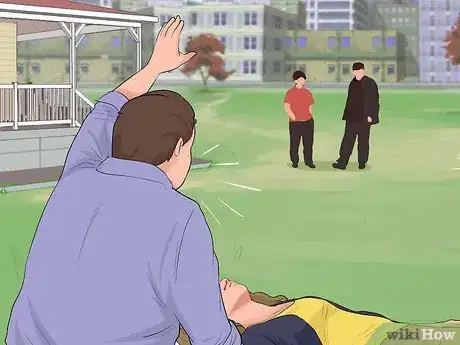

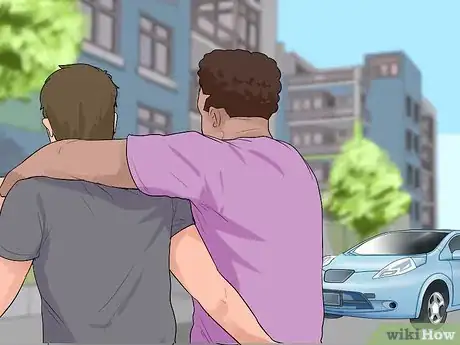
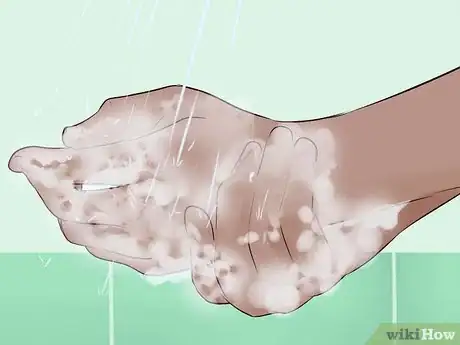
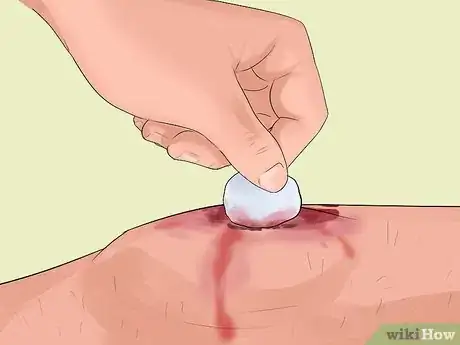
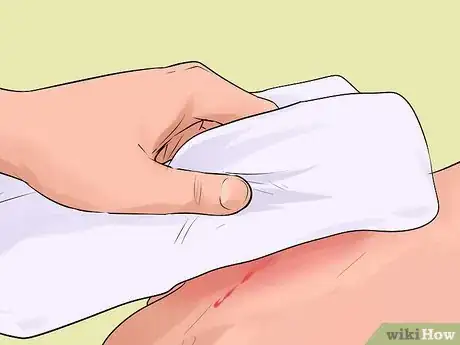
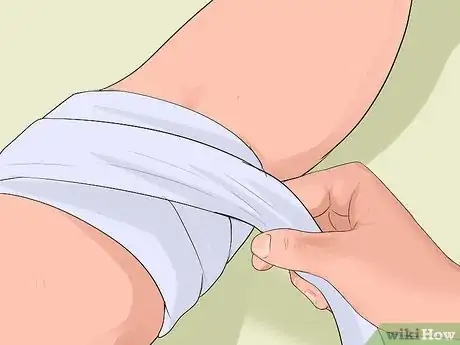
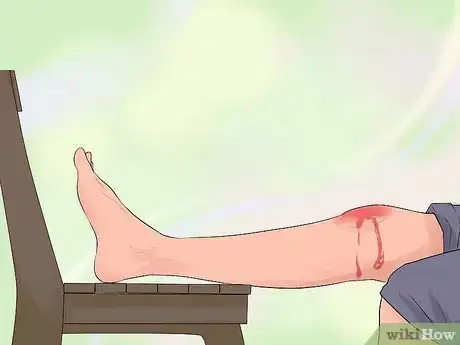
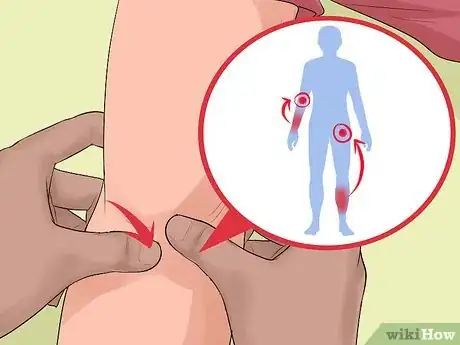
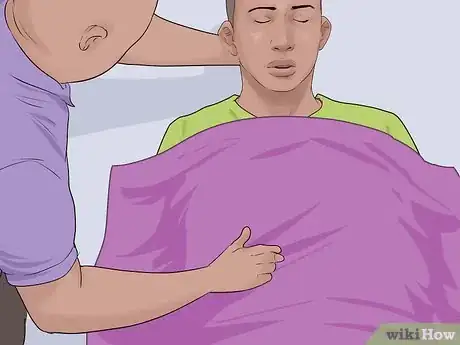
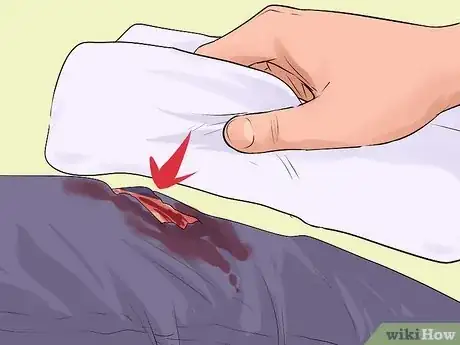


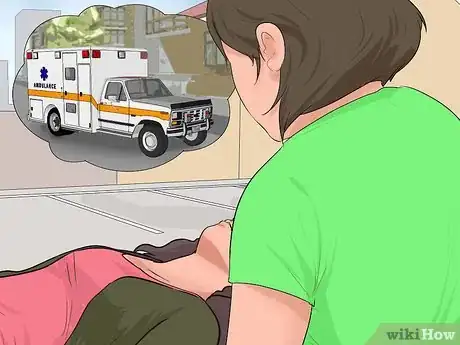
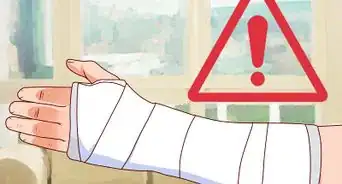
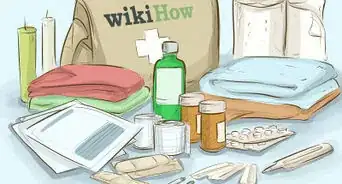
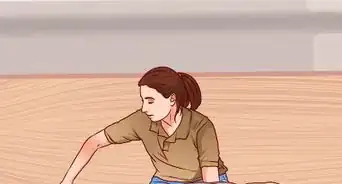

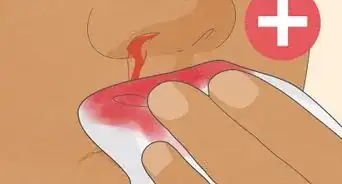
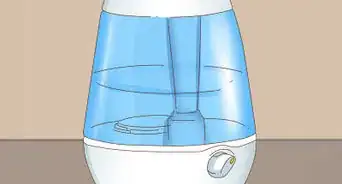
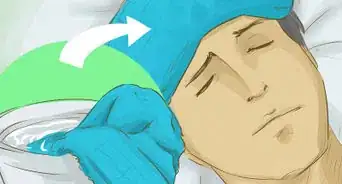
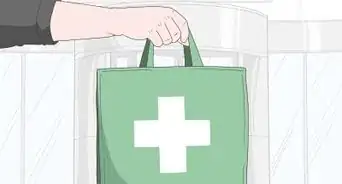

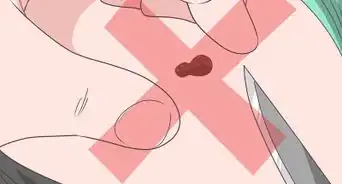

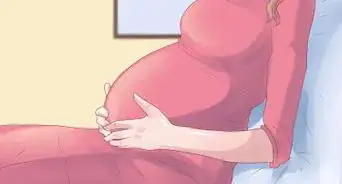
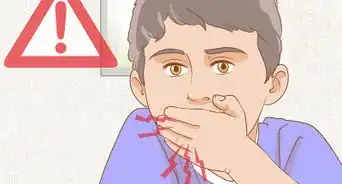
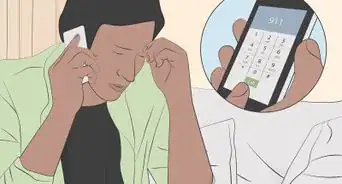










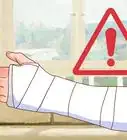
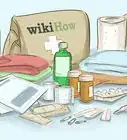
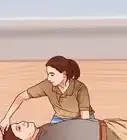
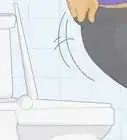



































Medical Disclaimer
The content of this article is not intended to be a substitute for professional medical advice, examination, diagnosis, or treatment. You should always contact your doctor or other qualified healthcare professional before starting, changing, or stopping any kind of health treatment.
Read More...